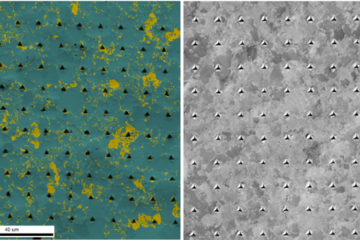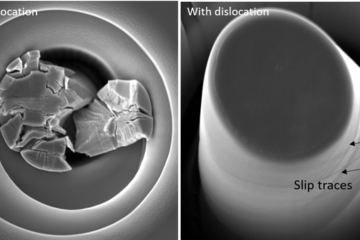All genres
21.
Talk
New Insights into Plasticity at Grain Boundaries by Nano- and Micromechanics. TMS 2017, San Diego, CA, USA (2017)
22.
Talk
Size and orientation effects on the elasto-plastic transition and deformation mechanism of twinning-induced plasticity steel micro-pillars. MSE 2016 Conference , Darmstadt, Germany (2016)
23.
Talk
Insights into dislocation grain-boundary interaction by X-ray µLaue diffraction. Dislocations 2016, West Lafayette, IN, USA (2016)
24.
Talk
Slip transfer through coherent Sigma 3 (111) twin boundaries loaded in different crystallographic direction: Insights by Laue microdiffraction. Materials Science and Engineering Conference, Highlight Lecture, Darmstadt, Germany (2016)
25.
Talk
Dislocation twin boundary interaction and its dependence on loading direction. 62. Metallkunde-Kolloquium, Lech am Arlberg, Austria (2016)
26.
Talk
Dislocation-grain boundary interaction at the micron scale: Insights by in situ Laue microdiffraction. Jung-DGM-Rhein-Ruhr, Aachen, Germany (2016)
27.
Talk
X-ray microdiffraction Laue experiments to understand plasticity at interfaces. 80th Annual Conference of the DPG and DPG Spring Meeting, Regensburg, Germany (2016)
28.
Talk
X-ray µLaue diffraction to understand plasticity at interfaces. DPG Frühjahrstagung 2016, Regensburg, Germany (2016)
29.
Talk
Slip transfer through coherent Σ3 (111) twin boundaries loaded in different crystallographic directions. DGM Arbeitskreis Treffen „Rasterkraftmikroskopie und nanomechanische Methoden"
, Saarland, Germany (2016)
30.
Talk
Differences in deformation behavior of bicrystalline Cu micropillars containing different grain boundaries. MS&T 2015 (Materials Science and Technology) meeting, symposium entitled "Deformation and Transitions at Grain Boundaries", Columbus, OH, USA (2015)
31.
Talk
Dislocation grain boundary interaction in bi-crystalline micro pillars studied by in situ SEM and in situ µLaue diffraction. ICM 12 - 12th International Conference on the Mechanical Behavior of Materials, Karlsruhe, Germany (2015)
32.
Talk
Plastische Verformung an Korngrenzen: Neue Einblicke durch miniaturisierte Zug- und Druckversuche. 11. Tagung Gefüge und Bruch (2015), Leoben, Austria (2015)
33.
Talk
Insights into dislocation slip transfer by µLaue diffraction. Arbeitskreis-Treffen der Deutschen Gesellschaft für Materialkunde (DGM) e.V. „Rasterkraftmikroskopie und nanomechanische Methoden“, Darmstadt, Germany (2015)
34.
Talk
In situ micromechanics: An overview on µLaue based experiments to study GND accumulation in various loading geometries. International Symposium on Plasticity, Keynote lecture, Montego Bay, Jamaica (2015)
35.
Poster
The effect of size-independent strength on the size effect in micro-compression tests. MRS Fall Meeting, Boston, MA, USA (2017)
36.
Poster
Dislocation slip transfer at Cu grain boundaries analyzed by µLaue diffraction. Gordon Research Seminar Thin Film & Small Scale Mechanical Behavior, Lewiston, ME, USA (2016)
37.
Poster
Dislocation slip transfer at Cu grain boundaries analyzed by µLaue diffraction. Gordon Research Conference Thin Film & Small Scale Mechanical Behavior, Best Poster Prize, Lewiston, ME, USA (2016)
38.
Poster
Orientation dependence of dislocation transmission through twin-boundaries studied by in situ μLaue diffraction. ECI - Nano- and Micromechanical Testing in Materials Research and Development V, Albufeira, Portugal (2015)
39.
Poster
Dislocation transmission in bi-crystalline micro pillars studied by in situ SEM and in situ µLaue diffraction. Workshop „Understanding Grain Boundary Migration – Theory Meets Experiment”, Günzburg, Germany (2015)
40.
Poster
Dislocation motion in bi-crystals with a specific grain boundary orientation studied by in situ SEM and in situ µLaue diffraction. Conference: Thin Film & Small Scale Mechanical Behavior Gordon Research , Waltham, MA, USA (2014)











